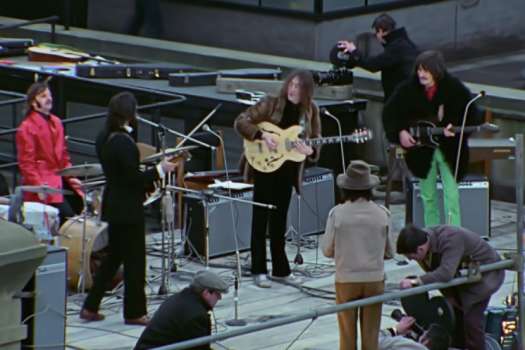Though Martin Rosen's adaptation of Richard Adams' famed novel Watership Down encompasses an abundance of themes and concepts including fatalism, environmentalism, the nature of freedom, political discord, will and consequence, it's the notion of impermanence that looms over the watercolour animation with an omnipresent sense of existential dread. Death and the knowledge of its inevitability drives every action of the prescient Fiver, the brave Hazel and their gang of followers, fleeing their homeland and its totalitarian political structure with the hope of finding freedom after Fiver has visions of blood and death filling the fields around them.
At the time of its release, Watership Down created controversy chiefly for these thematic concepts. It was given a general rating, having no objectionable profanity or sexual content, leaving it open to youth audience viewership. As noted in the essay by Gerard Jones and by Guillermo Del Toro in a video interview included with the Criterion Blu-ray release, the seriousness in tone and matter-of-fact handling of mortality left a mark on children — and even adults — that viewed the film; the unsentimental handling of death and the unpredictability of it all, whether it's the sole female rabbit getting taken away by an eagle or Bigwig getting trapped in a snare in one of the most disturbing sequences of the film, has a harshness to it that's heightened by the embedded knowledge that it's also entirely honest.
This frank handling of a contextually daunting text stems from the film's origins. Director Martin Rosen didn't have a background in filmmaking or animation; he was an agent and producer that stepped in as director after John Hubley passed away. The style and interview supplements included with the Blu-ray outline the story of how Watership Down came to be, noting their unconventional approach to hand-drawn animation and pointing out the inconsistencies and occasional expressionistic sensibility that stemmed from a joint effort from a group of animators with slightly different dispositions. This was a passion project made by people genuinely moved by the subject matter, which is evident throughout the sombre, ultimately devastating work.
Though many concessions were made during the adaptation process, such as the muting of the real purpose and defeatist, guiding ideology of Cowslip's Warren and changing the outcome of the efforts made to free the Hutch rabbits (for breeding stock when the gang realizes that a lack of female rabbits would be the end of their line), this adaptation is very consistent. It's structured as a journey that serves as a metaphor for life. While Fiver manoeuvres through the series of compounding disappointments with a sense of certainty, guided by visions that suggest a fatalistic canvas, the others are filled with doubt.
This doubt leads to division, conflict and, when disagreements reach their climax, tragedy. In a way, this structure reiterates the overriding notion of harsh punishment for those that disobey their God (the anecdote opening the film suggests that the rabbits' natural predators exist only because they were too greedy and indulgent to live without consequence). But the crisp handling of death and frequent sense of nihilism challenges this notion of faith with a sense of unresolved futility.
This inner-argument and ideological vacillation works as a metaphor for life itself, where certainty frequently wavers and heartache and disappointment can weigh down even the most confident and single-minded of people. Despite being a tad taboo socially, it's a difficult concept to refute or outright ignore, which is why Watership Down lingers in the mind so long after viewing. It looks at life and its many possible meanings and tackles it all without offering any pat resolutions or reassurances. It merely presents what we know and forces us to deal with it in whatever way we choose.
(Criterion)At the time of its release, Watership Down created controversy chiefly for these thematic concepts. It was given a general rating, having no objectionable profanity or sexual content, leaving it open to youth audience viewership. As noted in the essay by Gerard Jones and by Guillermo Del Toro in a video interview included with the Criterion Blu-ray release, the seriousness in tone and matter-of-fact handling of mortality left a mark on children — and even adults — that viewed the film; the unsentimental handling of death and the unpredictability of it all, whether it's the sole female rabbit getting taken away by an eagle or Bigwig getting trapped in a snare in one of the most disturbing sequences of the film, has a harshness to it that's heightened by the embedded knowledge that it's also entirely honest.
This frank handling of a contextually daunting text stems from the film's origins. Director Martin Rosen didn't have a background in filmmaking or animation; he was an agent and producer that stepped in as director after John Hubley passed away. The style and interview supplements included with the Blu-ray outline the story of how Watership Down came to be, noting their unconventional approach to hand-drawn animation and pointing out the inconsistencies and occasional expressionistic sensibility that stemmed from a joint effort from a group of animators with slightly different dispositions. This was a passion project made by people genuinely moved by the subject matter, which is evident throughout the sombre, ultimately devastating work.
Though many concessions were made during the adaptation process, such as the muting of the real purpose and defeatist, guiding ideology of Cowslip's Warren and changing the outcome of the efforts made to free the Hutch rabbits (for breeding stock when the gang realizes that a lack of female rabbits would be the end of their line), this adaptation is very consistent. It's structured as a journey that serves as a metaphor for life. While Fiver manoeuvres through the series of compounding disappointments with a sense of certainty, guided by visions that suggest a fatalistic canvas, the others are filled with doubt.
This doubt leads to division, conflict and, when disagreements reach their climax, tragedy. In a way, this structure reiterates the overriding notion of harsh punishment for those that disobey their God (the anecdote opening the film suggests that the rabbits' natural predators exist only because they were too greedy and indulgent to live without consequence). But the crisp handling of death and frequent sense of nihilism challenges this notion of faith with a sense of unresolved futility.
This inner-argument and ideological vacillation works as a metaphor for life itself, where certainty frequently wavers and heartache and disappointment can weigh down even the most confident and single-minded of people. Despite being a tad taboo socially, it's a difficult concept to refute or outright ignore, which is why Watership Down lingers in the mind so long after viewing. It looks at life and its many possible meanings and tackles it all without offering any pat resolutions or reassurances. It merely presents what we know and forces us to deal with it in whatever way we choose.




